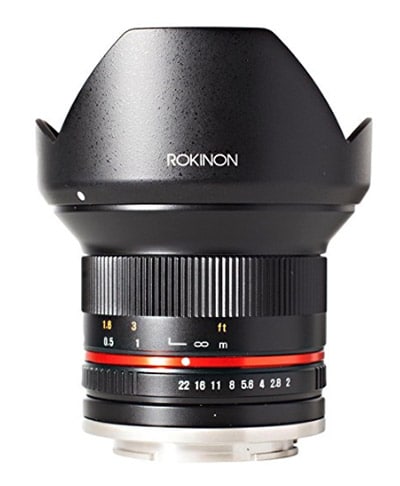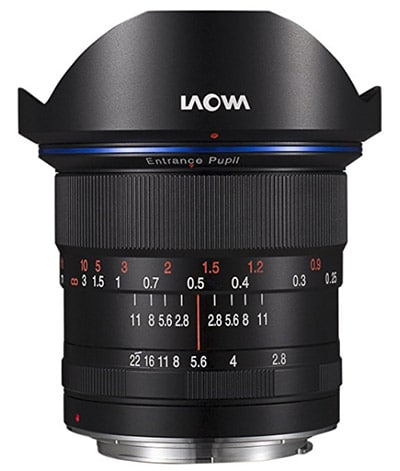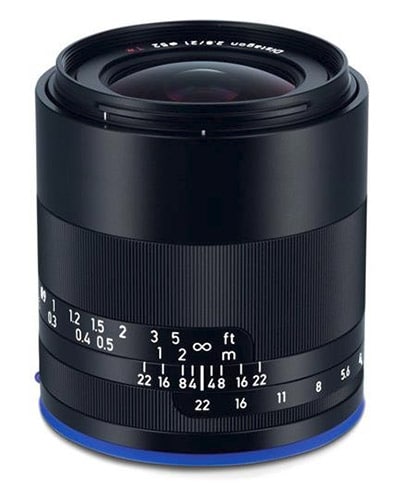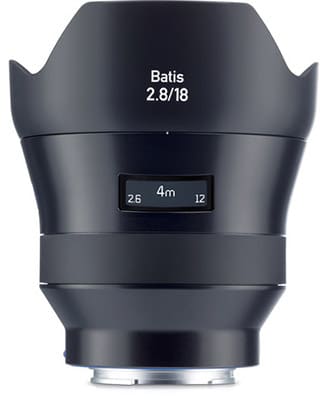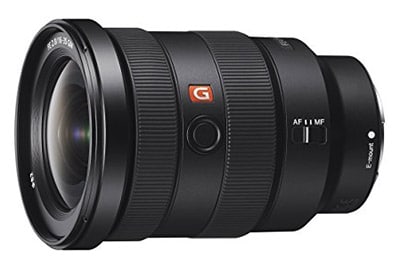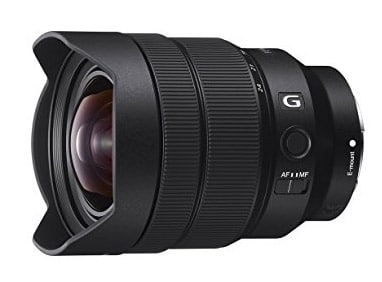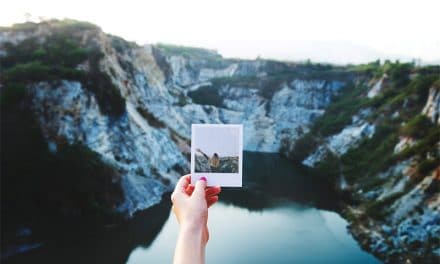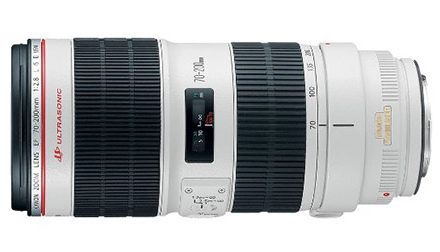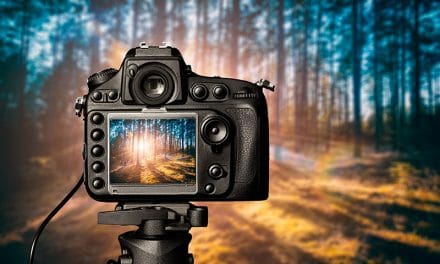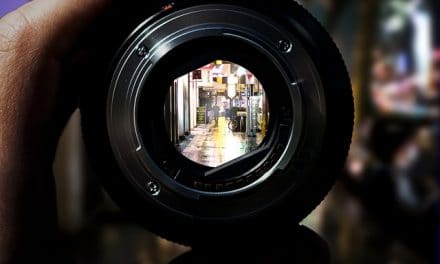A wide-angle lens is a go-to choice for many landscape photographers. If you shoot with a Sony mirrorless camera that has an E mount, you have plenty of quality wide-angle lenses to choose from. On this page, we’ll take a look at eight of the best options. While they are ranked in order, all of them are good quality lenses and they are only mentioned here because they cut as one of the best.
With that in mind, getting a good quality wide-angle lens should be a priority when you are budgeting how much to spend on different lenses and accessories. When it comes to choosing a wide-angle lens to buy, the process can be quite confusing. There are so many options and a lot of different factors to consider.
This list includes mostly prime lenses, but there are some zoom lenses as well. Read the details of each and decide which one is the best fit for your needs. Also, this article includes tips on how to shoot landscapes with a wide-angle lens.
Reviews of the Best Wide Angle Lenses for Sony E Mount
8. Rokinon 12mm f/2.0 NCS CS Lens
If you’re looking for a quality, budget-friendly wide-angle lens for a Sony mirrorless camera with an APS-C sensor, this is a great option. You should also be aware that this is a manual focus lens, with no autofocus. If you are ok with manual focus, this lens will produce excellent quality images, especially considering its low price tag. The 12mm focal length has an equivalence of 18mm on a cropped sensor.
It has a maximum aperture of f/2, making it very effective in low light situations. The minimum aperture is f/22. This is a lightweight lens, at around 8.5 ounces.
- For APS-C sensors
- focal length: 12mm (18mm equivalent)
- aperture range: f/2 – f/22
- 67mm front filter diameter
- autofocus: no
- weight: 8.6 oz.
7. Sony FE 28mm f/2 Lens
This is another budget-friendly option, but this one is for full-frame cameras (although it can also be used with APS-C sensors). At 28mm it is wide, but not ultrawide. Depending on your needs it may be wide enough, or you may want to go with another option. For landscape photography, there are a lot of situations where you may want something wider than 28mm.
The max aperture of f/2 is great, and the lens is capable of producing high-quality, sharp images. It is also dust and moisture resistant. While we don’t have it rated as high as some other lenses, it’s an excellent option if the 28mm meets your needs and if your budget is limited.
- For full frame or APS-C sensors
- focal length: 28mm (42mm equivalent)
- aperture range: f/2 – f/22
- 49mm front filter diameter
- autofocus: yes
- weight: 7 oz.
6. Venus Optics Laowa 12mm f/2.8 Zero-D Lens
We now step up a good bit in price with this 12mm prime lens. It features a maximum aperture of f/2.8, which is more than adequate for landscape photography. This lens is made for cameras with full-frame sensors, but it can also be used with APS-C sensors. The 12mm focal length on a full-frame camera gives you an ultra-wide-angle that you will love (equivalent to 18mm for APS-C sensors).
Like the Rokinon lens mentioned earlier, this one is a manual focus lens. It’s also considerably heavier than some of the other lenses on this list, weighing about 1.3 pounds. However, it is still an excellent quality lens. It is designed to limit the distortion that can be common with ultra-wide-angle lenses.
- For full frame or APS-C sensors
- focal length: 12mm (18mm equivalent)
- aperture range: f/2.8 – f/22
- no front filter thread
- autofocus: no
- weight: 1.3 pounds
5. Voigtlander Super Wide-Heliar 15mm f/4.5 Aspherical III Lens
This lens from Voigtlander is another excellent option for an ultra-wide-angle lens. It is designed for cameras with full-frame sensors, but can also be used with APS-C sensors. The lens has an equivalent focal length of 22.5mm for APS-C sensors.
One of the most significant differences to the other lenses we’ve looked at so far, the maximum aperture on this lens is only f/4.5 as compared to f/2 or f/2.8. That being said, f/4.5 should meet the needs of landscape photographers. This is also a manual focus lens. You’ll get excellent quality images and very little distortion from this lens.
- For full frame or APS-C sensors
- focal length: 15mm (22.5mm equivalent)
- aperture range: f/4.5 – f/22
- 58mm front filter diameter
- autofocus: no
- weight: 10.4 oz.
4. Zeiss Loxia 21mm f/2.8 Lens
Now we’re taking another step up in terms of price. Zeiss lenses have an excellent reputation, but they’re not cheap. This one is a 21mm prime lens. It’s not the widest of wide angles, but if it suits your needs it is an excellent choice. This lens is made for cameras with full-frame sensors, but can also be used with APS-C sensors (31.5mm equivalent focal length).
This is another manual focus lens. If you’re comfortable with manual focus you can get excellent image quality and corner-to-corner sharpness with this lens. The max aperture of f/2.8 is great as well.
- For full frame or APS-C sensors
- focal length: 21mm (31.5mm equivalent)
- aperture range: f/2.8 – f/22
- 52mm front filter diameter
- autofocus: no
- weight: 14 ounces
3. Zeiss Batis 18mm f/2.8 Lens
Another excellent prime lens from Zeiss, this one provides a bit of a wider angle at 18mm. Like most of the other lenses here, it is intended for full-frame cameras but can also be used with an APS-C sensor (27mm equivalent). This lens does have autofocus. It also has an OLED display that will highlight the focus distance and depth of field range.
The lens is also dust and weather-sealed, which is useful since you won’t always be shooting in ideal weather conditions. Overall, this is an excellent quality lens that will produce very good images. The focal length meets your needs and it is within your budget, it will be an excellent choice.
- For full frame or APS-C sensors
- focal length: 18mm (27mm equivalent)
- aperture range: f/2.8 – f/22
- 77mm front filter diameter
- autofocus: yes
- weight: 12 ounces
2. Sony FE 16-35mm f/2.8 GM Lens
The 16-35mm focal range is a popular choice for a wide-angle lens. 16mm is quite wide and a full-frame camera (this lens can be used with a full-frame or APS-C sensor), so this gives you a great range. All of the lenses we’ve covered so far have been prime lenses, but our top two choices are zoom lenses. You’ll pay more for a zoom lens, but it gives you much more versatility, which is why we like them.
One downside of the zoom lens is the added weight, as compared to a prime lens.
This lens has a constant max aperture of f/2.8, which is a slight advantage over our top-rated lens. It is also dust and moisture-sealed. Like other lenses in Sony’s G Master line, this one is of excellent quality and is capable of very sharp photos. If you’re in the market for a wide-angle zoom for a full-frame mirrorless camera, this is an excellent choice.
- For full frame or APS-C sensors
- focal length: 16-35mm (24-52.5mm equivalent)
- aperture range: f/2.8 – f/22
- 82mm front filter diameter
- autofocus: yes
- weight: 1.5 pounds
1. Sony FE 12-24mm f/4 G Lens
Our top-rated wide-angle lens for the Sony E mount is the Sony FE 12-24mm f/4 G lens. The reason we have this one rated higher than the 16-35 f/2.8 is that the wide focal length that can come in very handy for landscapes. The difference between 16mm and 12mm may not sound like a lot, but as you get that wide each mm makes a noticeable difference.
On the downside, this lens has a max aperture of f/4 as compared to the f/2.8 of the 16-35mm lens. However, f/4 will meet your needs for landscape photography 99% of the time, and the f/4 will save you some money as compared to the f/2.8.
This lens is also dust and moisture-sealed, and capable of capturing beautiful and sharp photos.
- For full frame or APS-C sensors
- focal length: 12-24mm (18-36mm equivalent)
- aperture range: f/4 – f/22
- no front filter thread
- autofocus: yes
- weight: 1.25 pounds
How to Choose the Right Wide Angle Lens
We’ve covered 8 excellent options on this page, but there are some significant differences between these lenses. The Rokinon 12mm lens is made only for APS-C sensors, while all of the others can be used with an APS-C or full-frame sensor. However, those lenses are intended for full-frame lenses and you can find cheaper, lighter options for an APS-C sensor.
Another major difference is that our two top-rated lenses are zoom lenses, and all of the others are prime. We recommend a zoom lens for its flexibility, but prime lenses do offer some benefits. They are generally lighter, and more significantly, they’re less expensive.
So we recommend that you decide if you want a prime or a zoom lens and that will narrow down the choices for you.
Four of the lenses covered here have autofocus, while the other 4 are manual focus only. If you need to have autofocus, that will also narrow down the choices for you.
Although all of these lenses are wide-angle, some are wider than others. Just how wide do you need? If your primarily shooting landscapes it is good to have an ultra-wide-angle lens in your bag. You will likely use it a lot.
In the end, you need to see which lens fits your needs and your budget the best.
Use all of these factors, and of course, budget, to help you determine which one is right for you.
Tips for Shooting Landscapes With a Wide Angle Lens
When shooting landscapes, most photographers reach for the wide-angle lens –and for good reason.
A wide-angle lens is perfect for landscapes, allowing you to fit more in. More than that though, wide angles offer a unique perspective that’s different from telephoto lenses, rendering landscapes as vast, sweeping landscapes –and resulting in images that draw you in, and make you feel as though you could step into the scene.
If you’re wondering how a wide-angle can make a difference in your landscape photography, read on for some tips for making the most of a wide-angle lens.
→ Related video: Landscape Lenses: The Characteristics
What is a Wide Angle Lens?
A wide-angle lens renders a wider view, more than what you can see with your eyes. Generally, anything with a focal length of about 20-24mm or less can be classified as a wide-angle lens.
If you don’t have a dedicated wide-angle, don’t worry! You can get started with wide-angle images by using the widest focal length on your kit lens –although, in some situations, a shorter focal length can offer superior results. If you’re serious about landscape photography, it’s worth investing in a dedicated wide-angle lens.
While some people use wide-angles for situations where they can’t step far enough away from the subject and want to fit everything in –this isn’t the only way to use a wide-angle. Wide angles are used to capture more of a scene, but more than that, they’re a great way to create images with a tremendous amount of depth –that’s in focus.
As a general rule, wide angles have two primary characteristics that you can use to capture some powerful landscape images.
→ See Our Page of Recommended Gear for Landscape Photography
Wide angles tend to exaggerate perspective, increasing the sense of distance and size. This means that things in the distance will appear smaller, and farther away, while things in the foreground will look larger, and more prominent. This is the opposite of telephoto lenses that tend to compress images, drawing the background closer and causing objects in the background and foreground to appear more similar in size.
Wide angles have a wide depth of field, perfect for landscape images where you want everything in the frame –from the foreground to the background to be as sharp as possible.
→ Related reading: 11 Steps to Tack-Sharp Landscape Photos
Getting the Most From Your Wide Angle Lens
Wide-angle lenses can be used to capture some amazing landscape images –but it helps to know how to work them! Here are some tips to help you to capture some great images with your wide-angle lens.
→ Related reading: Reviews of the Best Wide Angle Lenses for Canon
Foreground Interest
With wide-angle photography, a large part of your image will be the foreground, so make sure it’s interesting! Often, it makes sense for the foreground to be the main focal point since this will be the most prominent part of your photo. Other times, you’ll want to use leading lines in the foreground to draw your eye into the image and on towards the horizon.
When using a wide-angle lens, you’ll want to get much closer to the foreground and make it the main feature in your composition. If you don’t see any interesting foreground elements from where you are standing, consider changing locations or get down low to include more detail.
→ Related reading: How to Use Foreground Elements in Compositions
Depth of Field
Wide-angle lenses have a wider depth of field at any given aperture than other lenses. This allows you to capture sweeping landscapes with sharp front-to-back focus. A telephoto lens though, reduces this depth, compressing the elements in a scene so, for example, the mountain in the distance will appear closer.
Leading Lines
Be sure to take full advantage of leading lines when using a wide-angle lens. Leading lines can be a powerful compositional tool, and are a great way to draw the eye through the photo. Wide angles tend to exaggerate the sense of depth and scale in an image and lines can be a great way to draw the eye through the scene into the photo. Looking for lines to include in your landscapes can result in powerful, dynamic images.
Subject Size
With a wide-angle lens, subjects that are positioned in the foreground tend to be exaggerated, appearing much bigger than objects in the background. When using a wide-angle lens, you can position yourself close to subjects to emphasize this effect, and still capture plenty of background and contextual details in the frame.
The Horizon
Getting the horizon straight is important no matter what lens you’re using. A horizon that’s even slightly off can make the entire image appear off balance and crooked.
Wide Aperture
While most landscape images call for a narrow aperture to keep that the entire image clear and in-focus, in some cases you may want to use a wide aperture like f/2.8 to blur the foreground –or background and draw attention to a specific point in the image.
Things to Be Aware Of
Wide angles are great for landscapes, but to help you get the most out of your compositions, here are a few things to be aware of.
- Unwanted Flare
Unwanted flare can be especially common when you are using a wide-angle lens. When shooting into the sun, consider using a lens hood or changing your position slightly. - Distortion
Wide-angle lenses can cause a bit of distortion near the edge of the frames, but this bowing isn’t usually noticeable in your average landscape images. However, if you’re including subjects in your images, make sure you place them near the center of the image to avoid distortion –unless you’re going for creative effect. - Polarizers
Take care when using polarizers with a wide-angle lens. Polarizers are useful for preserving vibrant colors when photographing during bright sun. When using a wide-angle though, the polarization effect will be noticeable, resulting in an unnatural looking blue patch in the middle of the sky. - Converging Verticals
If your camera isn’t being held perfectly horizontal, there’s a chance of verticals converging. This means that buildings –or trees, or any other tall objects will appear as though they are tilting. This can be used creatively, but it’s an unwanted feature if you don’t want this leaning effect.
As you can see, your wide-angle lens can do so much more than “fit more into a scene.” Experiment, and look for unexpected ways to use your lens for unique and beautiful results. Look up –towards the trees, or down, over a stream or canyon, or even turn your camera vertically and using it to capture a scene with plenty of skies.
Find a focal point, and look for ways to use compositional elements to draw attention to the main point of interest.
Working with wide-angle lenses can be tremendously rewarding –and will result in some spectacular images. Once you start, you’ll discover what makes these lenses an ideal choice for landscapes, and there’s a good chance that you’ll want to use wide angles for most of your landscape photography.
Photo license links: CC BY 3.0, CC BY-ND 2.0, CC BY-SA 2.0

